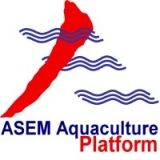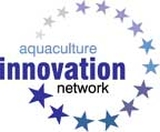A recent project in partnership with the Marine Ingredients Organisation IFFO, evaluated the current status of global fishmeal and fish oil production. The main focus was to determine the source of the raw materials in terms of species composition, quantities from whole fish and from by-products, from capture fisheries and from aquaculture. Also to determine how much of the supply was regulated by IFFO RS standards. The study found that around 35% of fishmeal and oil currently comes from by-products, but there was a lot of potential for increasing this particularly in parts of Asia but also globally. In Asia there is limited processing of fish, but in other parts of the world, fish processing by-products are often under-utilised
SHASP Malawi (Small-scale hatchery aquaculture seed production). This was a 3 year Scottish Govt Small Grants Scheme funded follow up project to the Aquaculture Enterprise Malawi project below. It aimed to develop 15 carefully selected entrepreneurial fish farmers in southern Malawi to become financially viable small-scale pond hapa based tilapia fingerling producers. Details of the project can be found on the regularly updated AEM SHASP Facebook site
Aquaculture Enterprise Malawi (AEM) was a three year Scottish govt funded project developing and supporting carefully selected entrepreneurial individuals within a 100km radius of Blantyre, southern Malawi to become standalone financially viable small scale fish farming businesses. The model emphasizes the use of good quality fingerlings and commercial feed, and provides initial microcredit for these inputs in the first 6 month cycle. AEM also develops marketing and sales expertise with the target fish farmers and provides small business set up skills including computer and IT training. To follow the regular activities of the AEM team in Malawi see regularly updated AEM Facebook site
Post-catch survivability of discarded under-sized Norway lobsters: Under the new Common Fisheries Policy in Europe, discarding of wild caught animals is to be banned unless high survival rates can be demonstrated. This one-year Fisheries Innovation Scotland funded project observed survival of discarded Norway Lobster (Nephrops norvegicus) from catches aimed at the live export market in which undersized individuals are of lower value and may be better returned to sea than landed. The Sustainable Aquaculture group provided expertise on modelling survival in response to different ecological variables as part of our commitment to sustainability across the Fisheries-Aquaculture continuum. Project report available at http://www.fiscot.org/projects/2014-15-projects/
ASEM Aquaculture Platform - An EU 7th Framework Project coordinated by Ghent University and focusing on research, teaching and industry links between Europe and Asia. The Sustainable Aquaculture Research group worked with colleagues in the Aquatic Animal Health Research Group to lead a workpackage to strengthen EU-Asia collaboration on aquatic animal health issues. A separate web sitewas developed and information shared through the Scoop.It service.
AQUA-TNET - the EU Erasmus Thematic Network for Aquaculture Fisheries and Aquatic Resources Management. This network was funded for nine years and was coordinated by Stirling over the last three. It brought together between 80 and 100 organisations involved in aquaculture sector education and training from almost all EU Member and Associated States. Activities included focus on innovations in learning and teaching (especially involving the Internet and ICT), the role of generic skill development and enhancing international mobility opportunities. The overall work of the network was summarised in a special edition of Aquaculture International and a separate website was set up to host training materials and courses based around industry case studies (AquaCase).
Ento-Prise was a 2-year DfID-funded project, under the AgriTT Research Challenge Funds, which aimed to give value to low-price organic waste by transforming them into valuable co-products using insects. The project brought development practice and research expertise from China, the UK and Ghana to improve food security through technology transfer and knowledge sharing. The Black Soldier Fly (Hermetia illucens) was proven to convert efficiently organic matter into larvae –used as a source of protein- and compost –to fertilize crops. A medium scale insect-production system in the Greater Accra region in Ghana was developed. We have successfully tested the insect larvae meal as a feed substitute for Tilapia fry during their sex-reversal period, and as a source of protein for poultry (Guinea fowl) diet. The left-over susbtrate of the bioconversion process (i.e. frass) was proven to act as a natural fertilizer and soil conditioner on local crops.
You can follow our activities on the Facebook page of the project and watch our videos on how to breed Hermetia illucens and how to set-up your own production system.
Metric For Aquaculture Nutritional Impact for Girls (MefANIG) was a project funded by the IMMANA programme of the Leverhulme Centere for Integrative Research on Agriculture and Health. Involving partners in Bangladesh, Cambodia, Denmark and Scotland, the two year project aimed to develop a metric usable by field practioners to inform their nutritional advice to rural communities engaged in farming seafood. In particular the metric focused on the needs of vulnerable adolesecent females for whom good nutrition has an intergenerational impact in line with the 1000day movement. http://thousanddays.org/
Developing a Wellbeing Metric for Adolescent Girls: The IMMANA was a collaboration between the University of Stirling, University of Glasgow, University of Aberdeen, University of Copenhagen, Noakhali Science and Technology University, and the icddr,b. This 27-month project was funded by the LCIRAH, which developed an integrated metric of wellbeing based on socio-geographic factors. This metric allows healthcare practitioners and policy makers to identify at-risk areas where intervention efforts should be concentrated. Socio-geographic data and blood samples were collected from adolescent girls in Southwest Bangladesh. Adolescent girls were targeted as the most vulnerable demographic, as these girls often eat last within Bangladeshi households and, as future mothers, determine the health of upcoming generations. The collected data were then used in a multivariable regression analysis to create a metric. This analysis found that four key factors were associated with omega-3 blood levels: dietary diversity, religion, saline-region, and female autonomy score. This metric was validated using both external data and bootstrapping methods.
The Aquaculture Innovation Network (CSN-INTRAN) was an EU funded (5th Framework RTD, 2004-07) project with the objective to enhance innovation and technology transfer within the European aquaculture sector and to support small and medium sized companies in the sector to develop and adopt new technologies and practices. The project especially focused on the New States that joined the EU in 2004 and opportunities for innovation through transfer of technology and business know-how. Specific initiatives included building collaborations to license and introduce vaccines to the Polish and Estonian trout farming sectors, to support product and market development for Hungarian and Czech carp producers and foster collaboration across countries to improve and implement recirculated aquaculture technologies. A further aspect of the project was linkages with other EU funded innovation projects across a wide range of sectors to share generic skills, competences, insights and knowledge.
The Institute of Aquaculture (University of Stirling) coordinated the project which involved the following other partners: Federation of European Aquaculture Producers (FEAP), European Aquaculture Society (EAS), EUROFISH, SINTEF Fisheries and Aquaculture AS (Norway), the Research Institute for the Exploration of the Sea -IFREMER (France), Aquapark Association (Hungary), University of South Bohemia and Research Institute of Fish Culture and Hydrobiology (Czech Republic), Double Delta Ltd (Hungary), Hodowla Ryb Paraszyno (Poland), Estonian Agricultural University (Estonia), Aqim (Iceland), Aquaculture Vaccines Ltd. (UK), and Aquacultur Fischtechnik GmbH (Germany).










